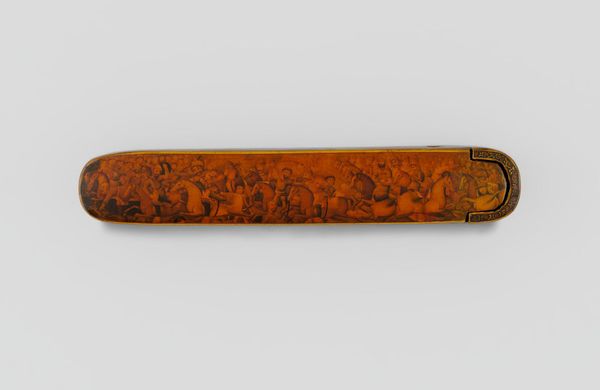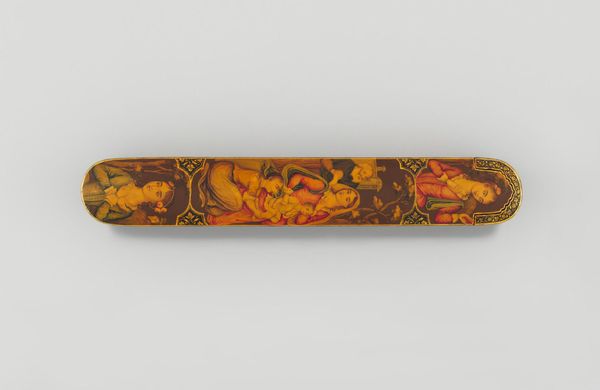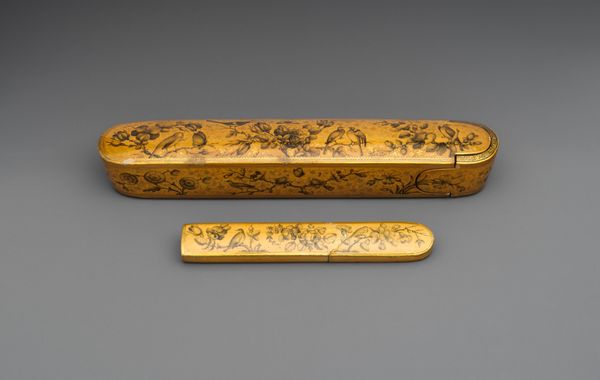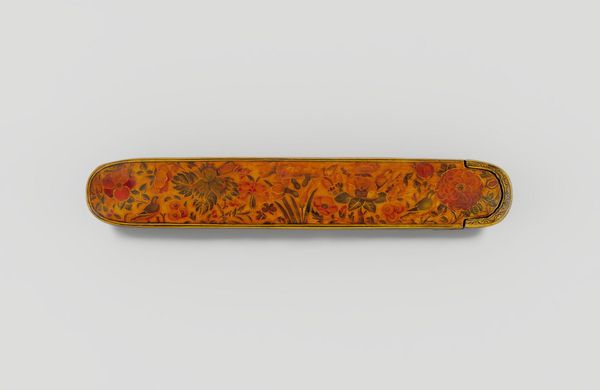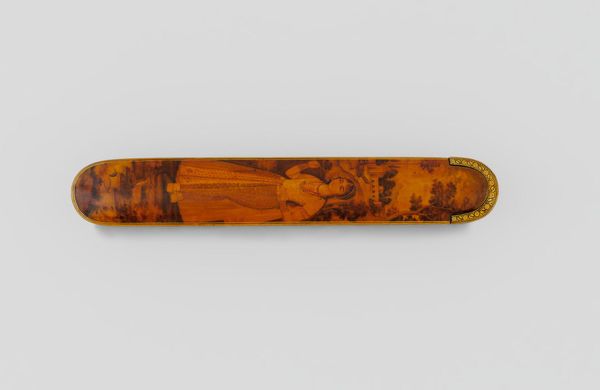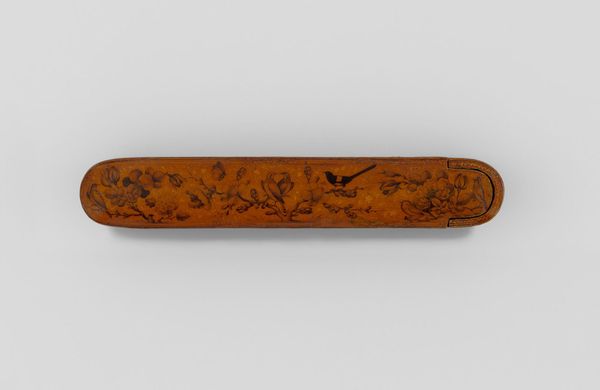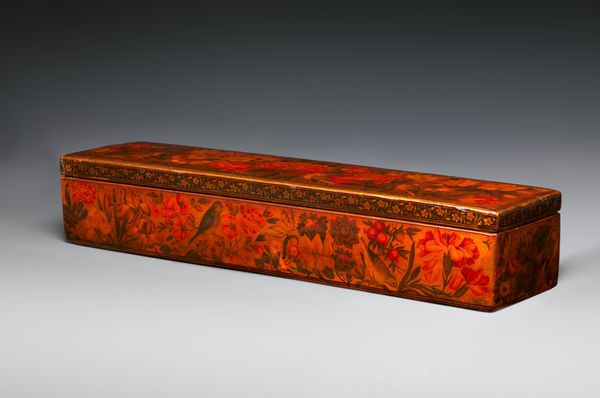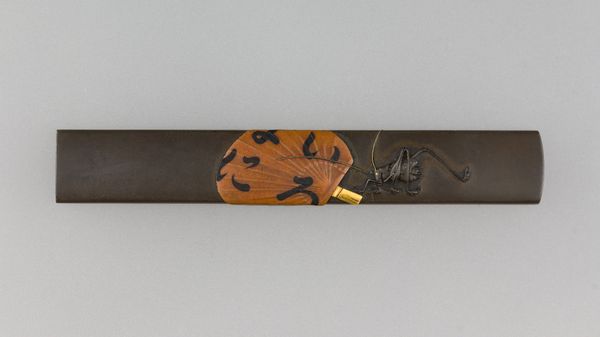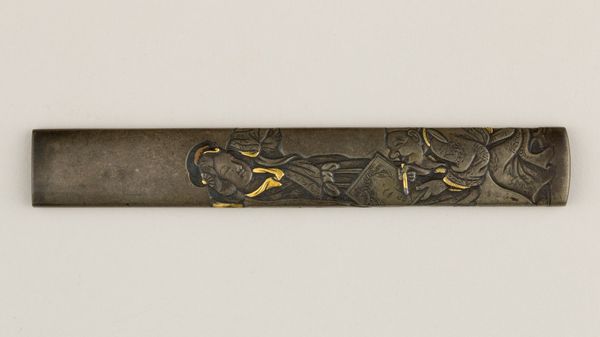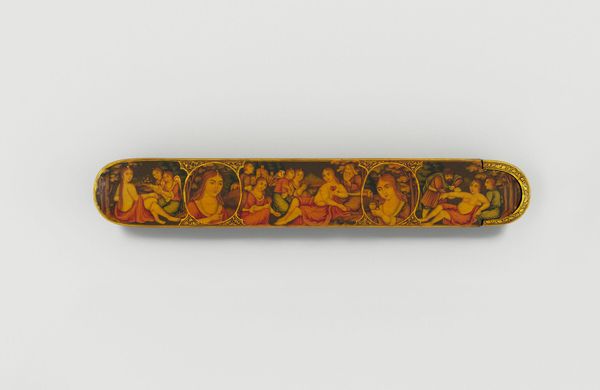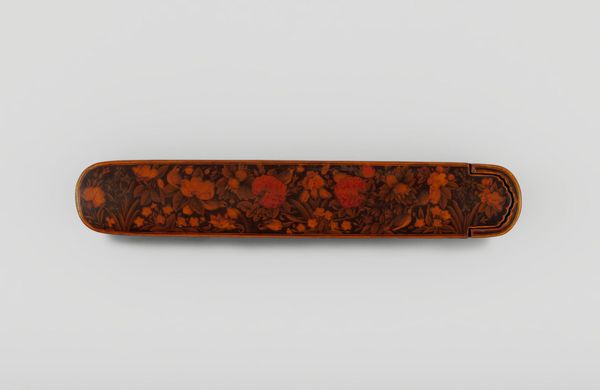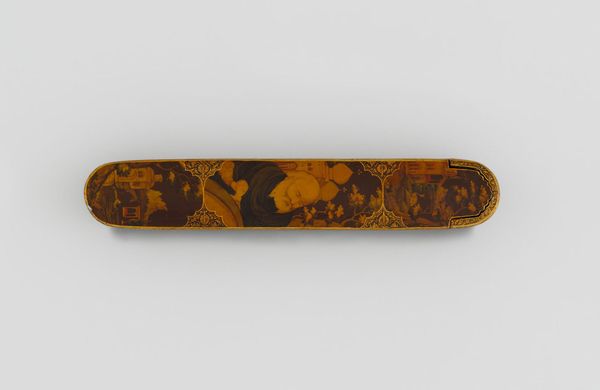
ornament
product studio photography
3d sculpting
ornament
egg art
3d printed part
asian-art
product fashion photography
jewelry design
sculptural image
stoneware
framed image
men
water
watercolour illustration
decorative-art
Dimensions: 3.8 × 23 × 3.5 cm (1 1/2 × 9 1/16 × 1 3/8 in.)
Copyright: Public Domain
Editor: Here we have a pen box, dating from the Qajar dynasty in the 19th century. It's currently held at the Art Institute of Chicago. The intricate painted scenes wrapped around it are stunning. What jumps out to you when you examine this piece? Curator: The most interesting aspect to me is the labor involved in creating such a highly decorated object. The materials themselves – likely wood, lacquer, and pigments – speak to trade networks and available resources within the Qajar dynasty. What can we learn from its production about the relationship between art and craft at the time? Editor: I see what you mean. The precision required for such fine detail is impressive, considering it is an everyday object. Is it considered 'high art', or is it seen more as a functional item? Curator: That's a boundary we must question. The division between "high art" and "craft" often overlooks the skill and artistry invested in items made for daily use. The production of this pen box also likely involved a workshop, meaning we must think about the division of labor. Who designed it? Who applied the lacquer? Understanding the social context of its creation reveals so much about Qajar society. Editor: That’s fascinating, thinking about who created this and how it fits into their daily life, and the lives of those depicted on the box! Curator: Exactly! And consider the intended consumer: were these luxury items destined for the elite, reinforcing social hierarchies through material possessions? Thinking about the whole system—labor, materials, and the pen box's role within it, provides an insight that transcends traditional art historical analysis. Editor: I never really thought about it that way before. Focusing on the materials and the process definitely opens up a different way of appreciating the artwork. Curator: Precisely. We see not just the final object but also glimpse into the world of its making, consumption, and social context. A whole network revealed!
Comments
No comments
Be the first to comment and join the conversation on the ultimate creative platform.
